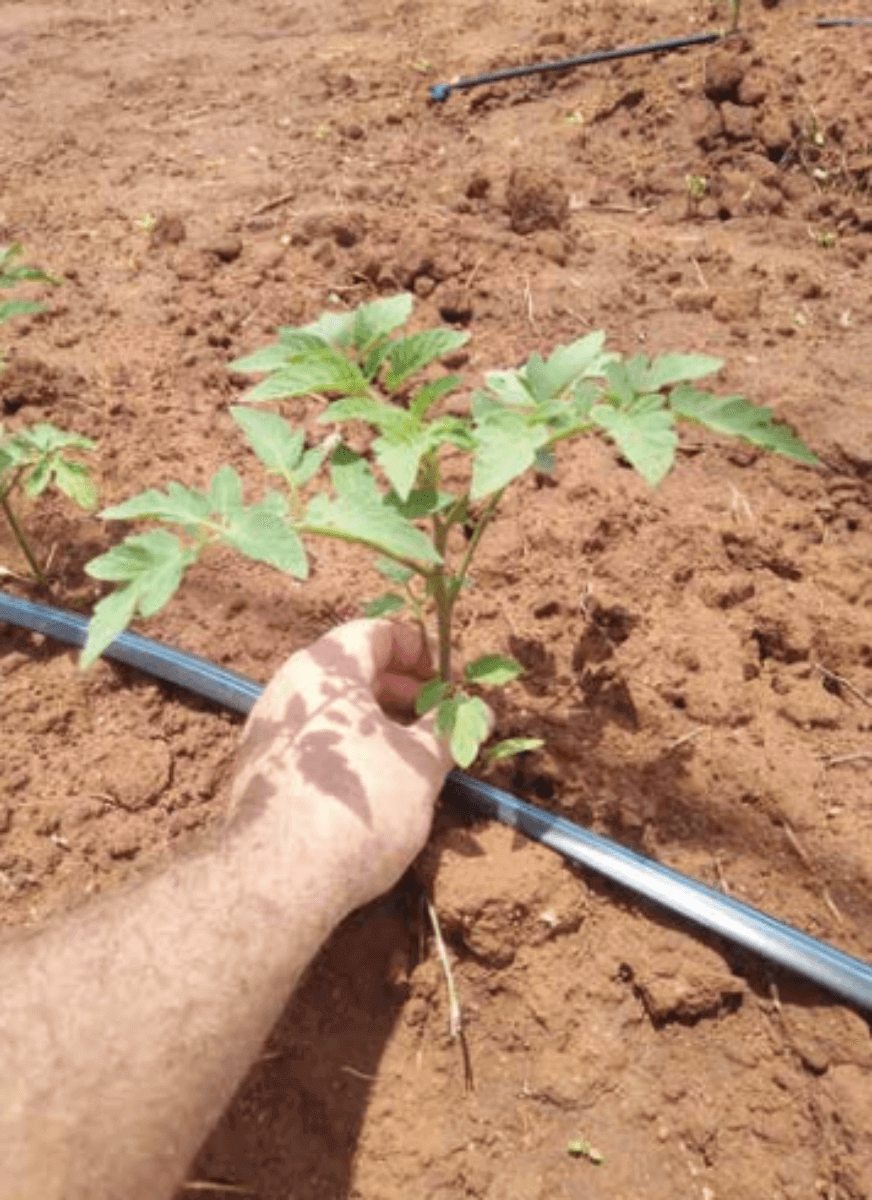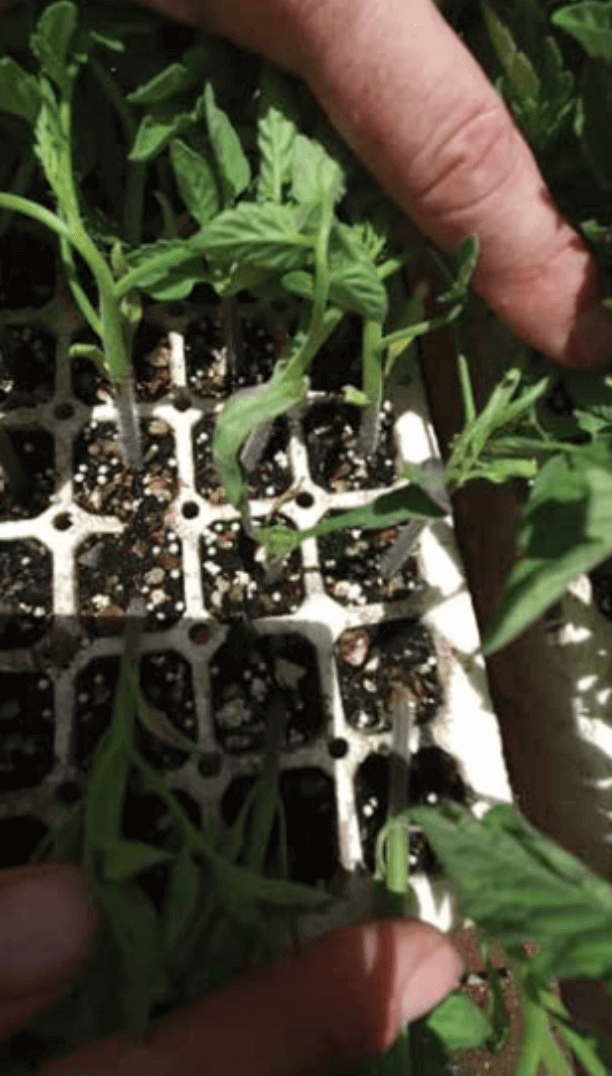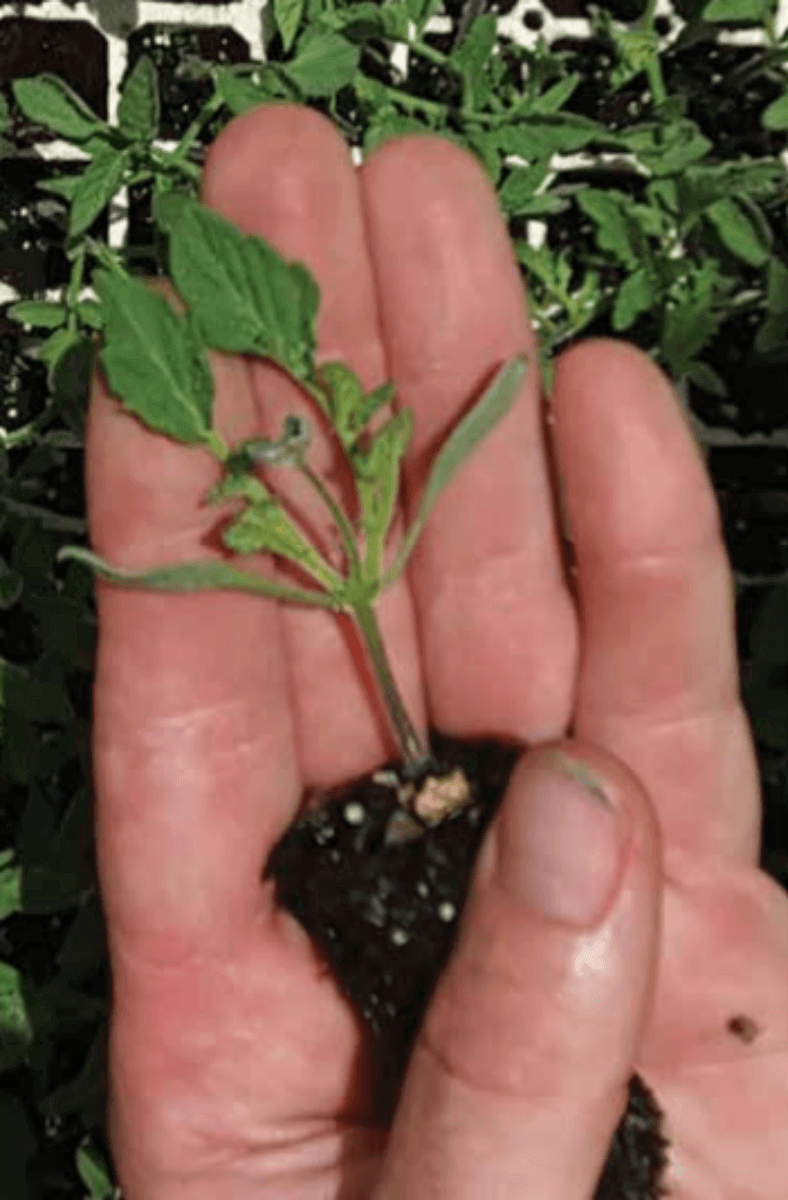Blind plants in tomato is a disorder concerning the growing point. The tomato plant passes through several stages in the course of a season’s growth, namely: seedling establishment, vegetative growth, flowering, and fruiting stages. During the period of seedling growth, several factors could influence the quality of a seedling, such as:
- Seed quality
- Seed vigour
- Root system development
If anything negatively affects the development of the seedling, it directly influences the crop potential, as the young leaves are essential as the source of energy to the seedling. Since there are few leaves at this stage, anything that damages them may slow growth and reduce yields (Strand et al., 1998).
Blind plants may occur early in development, resulting in a seedling with no true leaves or just one, two, or three leaves. It can also occur later in plant development, after the 5th or 6th node has developed, but at this stage, it is mainly an effect of growing conditions.



According to Incotec et al. (2020), this sensitivity can depend on several factors. Conditions during seed production, as well as during post-harvest processing of the seed, can increase the sensitivity and may eventually, when a “threshold” is passed, lead to an increase in blind plants. Furthermore, germination and growing conditions can affect the occurrence of blind plants.
- Tomato plants easily form side shoots, so after a while the plant may recover. When grown at a plant raiser, these plants are often too retarded to be usable, but when sown directly in the field, they may not be noticed.
- Priming can have a dramatic effect on the occurrence of blind plants. In sensitive cultivars, increases of over 30% have been observed.
- There is certainly a genetic factor that determines whether a cultivar is sensitive to developing blind plants or not (it may be related to the “determinate” character).
A company by the name of Incotec regularly gets the question whether it is possible to “repair” tomato seed lots that already have 10–15% blind plants, probably caused by the genetic background and the conditions during seed production. Incotec continues to maintain research projects in this area to find a repair solution.

“Blind plants may occur early in development, resulting in a seedling with no true leaves or just one, two, or three leaves.”
Incotec began looking into the blind plants problem in tomatoes in 1995. The goal was to develop a priming method that would not increase the incidence of blind plants but still allow for increased uniformity and speed of germination. Since that time, a safe priming has been developed and is now used for most of the tomato seed lots being grown in many different countries (e.g. the Netherlands, Brazil, Italy, Spain, Israel).
These stresses may delay the onset, rate, and uniformity of germination. Nevertheless, the impact of the environment depends to a large extent on the interaction between the genetic makeup of the plant and the environment, and it is believed that the plant’s response to environmental stresses is controlled by many genes.
Completion of germination is defined as the protrusion of the radicle through the endosperm and seed coat (Bewley et al., 2012). During imbibition, the embryonic axis elongates and breaks through the testa.
Although seed size and/or weight is beneficial for seedling establishment and vigour-related traits, there appears to be no consistent association between seed mass and seed germination performance (Fenner, 2006; Kazmi et al., 2012; Khan et al., 2012).

It is still not known exactly what causes blindness. According to Flood et al. (1997), seed germination of tomatoes is the most sensitive stage of plant life and is greatly influenced by various environmental stresses, including temperature and water loss.

Seed germination rather depends on the composition of seed reserves and the balance among different hormones—particularly abscisic acid (ABA) and gibberellic acid (GA)—that underpin germination potential, rather than one or the other alone (Penfield and King, 2009).
It was noted during the 2020 season that tomato seedlings in a nursery had an abnormal growth habit, with an absent growing point during the seedling development stage. This forced the plant to form secondary side stems on the main stem, forming a new dominant growing point. Speculations at that time pointed back to the seed company, suggesting a problem with seed quality, and that it only happened with one variety in a specific nursery.
After obtaining all available information from other nurseries that used the same variety and experienced similar problems, it is speculated that climatic growing conditions were not favourable during the seedling germination stage, which affected the dominant growth point. According to Paulo et al., from a well-known seed company, the norm in the US is between 4% and 5% abnormal seedlings, which will later also develop into fruit-yielding plants.
The above information supports the speculation that, in this specific incident, the sensitivity of the tomato variety to an imbalanced ratio between hormones may have been triggered by the application of a growth stimulant at a very young stage, allowing the development of seedlings without a dominant growing point.
(Written by Luhan Swart – Technical Manager)










